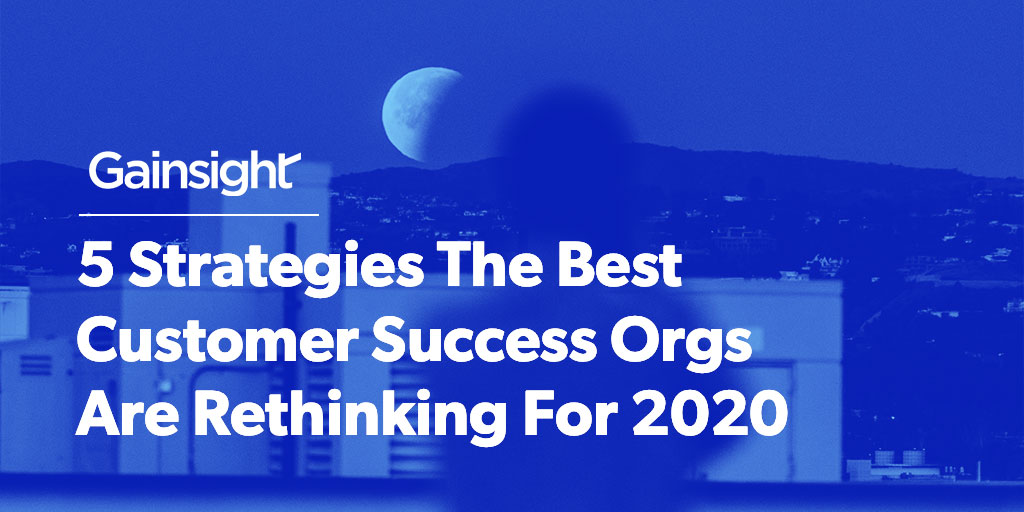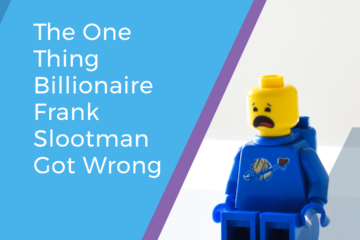5 Strategies The Best Customer Success Orgs Are Rethinking For 2020

I’m a huge fan of science fiction. A little bit different, but in the same wheelhouse is speculative fiction—and I love that word: speculative.
Coming up on the end of the year, we’re in a period of time where CEOs and CS leaders are looking back to look forward. We’re “speculating” about what 2020 is going look like, and we’re imagining new worlds and new technologies. And hopefully, we’re picturing more of a Star Trek-style utopia than a post-apocalyptic, “Mad Max” vision of our futures.
But we’re going one step further than Gene Roddenberry did with Star Trek or George Miller with Mad Max—we’re planning out how to realize our visions of the future.

I recently read a sci-fi book that got me thinking about the “how” of that process. It’s called Seveneves, and I highly recommend it to any fellow sci-fi geeks, but I won’t spoil anything other than the very first sentence, which is one of the all-time great opening lines in any book: “The moon blew up suddenly and without warning.”

As a narrative device, it’s a jumping off point for Neal Stephenson, the author, to start speculating (with great scientific rigor) on what would happen in a “near-future” world if something cataclysmic like the moon blowing up were to happen. It erases any preconceived notions of where the future might lead, forcing the author (and in the narrative, all of humanity) to start from first principles.
In some ways, starting from scratch with a world-altering event gives the author a lot more freedom to speculate on how humanity might adapt and evolve than if they were to try an imagine how our current society and technology will change organically over time.
And I think the same is true with planning out your customer success strategy for 2020 and beyond.
Extrapolating the future of your customer success organization
It’s one thing to look ahead to the future of the broader customer success movement. We did that at Pulse in May—you can watch our predictions and judge whether they came true here. But it’s another thing to speculate on the future of your own customer success organization.
If you imagine more incremental changes, you might see a slightly more efficient, more mature set of processes by the end of the year. But what if you “blew up the moon” instead?
At Gainsight, we chose to start from first principles instead of extrapolating slight efficiency gains across the board. And in the course of our process, we identified five strategies we’re rethinking—as are many of the top customer success leaders in our network.
1. Rethinking segmentation
How do you segment your customer base? Along regional lines, like Sales? By ARR or employee count like most companies—including Gainsight—have done in the past? Or some other combination of factors?
Many leaders we’ve talked to are moving away from just looking at current spend or company size to a more “outside-in” framework that reflects:
- Expansion potential and…
- The way the client wants to be served.
This is leading some companies to investigate “pod” models where CSMs and Account Executives and perhaps even technical teams and Professional Services team up on a pool of expansion-ready accounts.
2. Rethinking leading indicators
Lots of CSM teams are looking almost entirely at activity or adoption metrics as the “holy grail” of customer health. That leaves companies without easy access to that data feeling like they’ve been left out in the cold—and conversely, companies with robust usage data may feel overconfident.
But it’s not really activity or adoption that directly drives a customer to renew and expand. Those are leading indicators for the real “holy grail” data point: outcomes. Remember: customer success is what happens when your customer achieves their desired outcome with your product or service. But how do you know if those outcomes have been achieved?
At Gainsight, we adopted the notion of compensating and measuring our Client Outcomes Management (COM—equivalent to a CSM) team on “Verified Outcomes.” We ask the COM to verify in writing with each client what business outcomes have been achieved.
We’ve found that our clients who have verified outcomes renew at a 16% higher rate than those without. You can read more about verified outcomes in this blog from our CCO.
3. Rethinking wasted activities
If you’re planning out your year to grow by adding more accounts or programs to your team, you’re probably writing more of a dystopian sci-fi than a utopia. You can’t just add to the CSM team’s workload and expect efficiency gains to make up the difference. Your team is smart and they’re probably working really hard already. If you want to get better results out of your team, you have to think about what you can take off their plates before you put something back on. So, going back to first principles, What programs or strategies AREN’T working? What can you drop in 2020 to focus on what IS effective?
4. Rethinking training
One thing I do NOT recommend dropping—but rather expanding—is your training program. The best teams are investing heavily in CSM training and enablement. Too many leaders view training as a necessary, but unfortunate cost. If that’s the case, you should be able to prove the ROI one way or another. Think of training as an investment that you’ll get back in retention and expansion dollars this year That’s how effective it can be. This includes bringing in outside training experts on customer success. It also includes possibly hiring dedicated enablement resources on the CS team. Pulse+ is another purpose-built resource we’ve been developing for over a year to deliver standardized, academic-style training and certification in a user-friendly interface
5. Rethinking technology
Instead of working backwards from the tasks you want your CSMs to do, it’s time to rethink technology as an engine that can drive real customer-centric synchronization across your company. The leading companies in this area are moving away from “art project” teams with a narrow mandate toward a more scientific method. They know that repeatability and scalability aren’t possible without systems—and point solutions aren’t repeatable or scalable. And they realize that Q1 is the perfect time to launch these new processes.
—
If you’re writing “incremental” science fiction, you’re probably envisioning a future where you start planning for next year in January and hope by next December you can figure out your technology budget. Which means it could be 2021 by the time you actually get around to it. That’s way, way too late.
Speaking of the future, one great forcing function for change is your company’s annual kickoff. Many companies bring their go-to-market teams together—increasingly including Customer Success—in the beginning of the new year. The kickoff is an amazing opportunity to announce your new vision for Customer Success in 2020. Maybe it could be your “blow up the moon” inciting event! What are you going to rollout in your kickoff? What future are you going to make happen?



